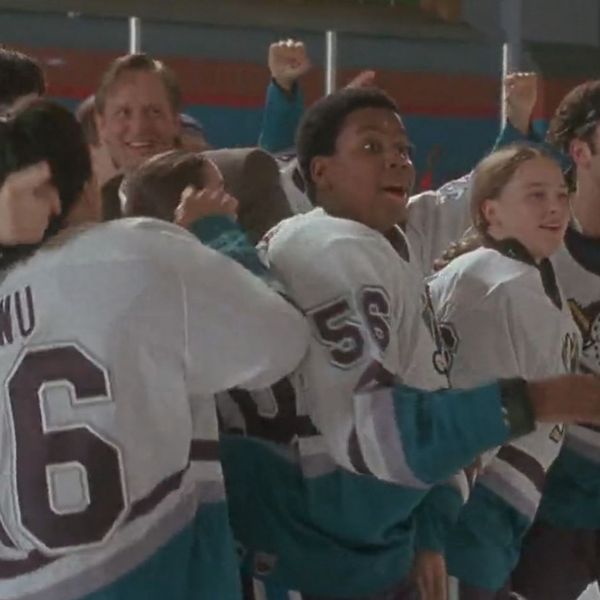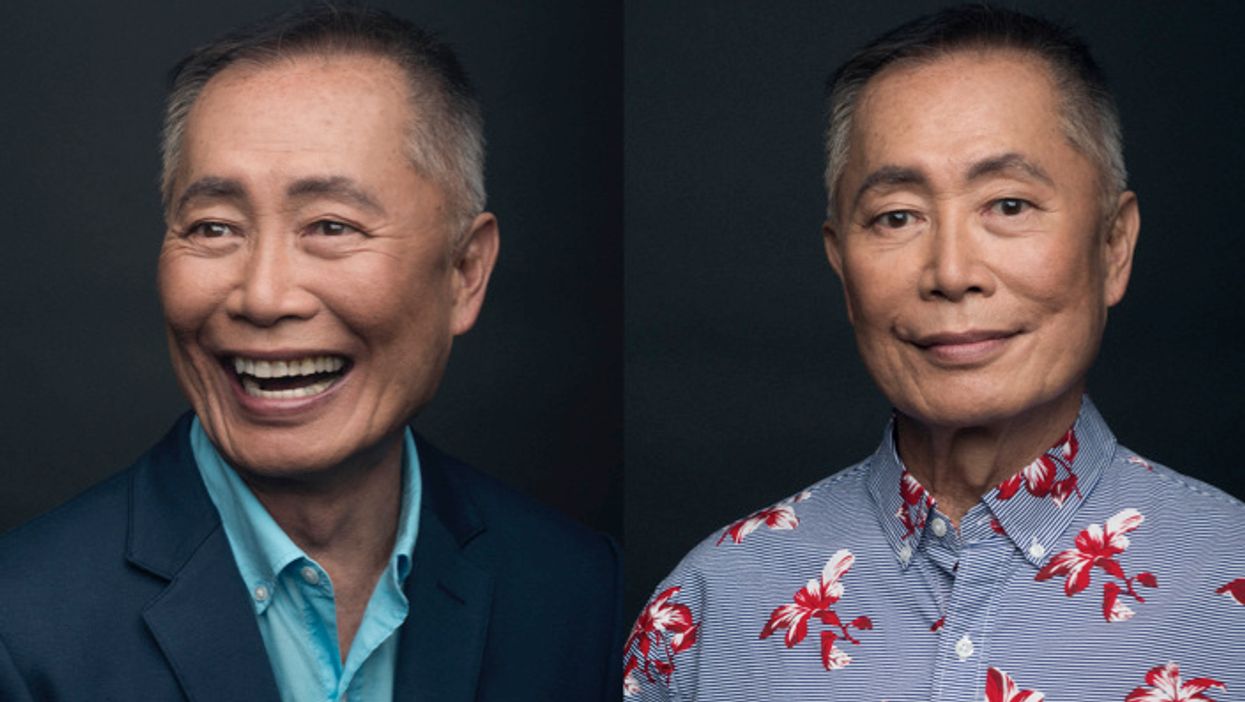March, 2001, LOS ANGELES - Since 1991, I've been working from time to time with a gifted symphony conductor, David Warble, on a project that has become increasingly fulfilling. He asked me then to provide the narration for a symphonic composition by Johan de Meij inspired by the great Tolkien classic, "The Lord of the Rings." It was an intriguing offer. The trilogy is an epic adventure of imagination. But how can that complex heroic fantasy be summarized in a musical narration? This was, I rationalized to myself, to be in concert with orchestral music. That should help bridge the inevitable gaps in the narration. More out of curiosity, mixed with a dash of actor's audacity, I agreed to do it.
The concert was to be performed with the California Wind Orchestra at the Orange County Performing Arts Center, a dazzling new cultural complex south of Los Angeles. The venue, too, was an attraction. Performing there would be a prestigious addition to my credits.
At the rehearsal, I heard the music for the first time. I was blown away! It was soaring. It was dark. It was rousing and lyrical. Altogether, it was richly complex. At that instant, I realized what an extraordinary privilege it was to be working with Dave Warble on this project. The music embodied the splendor and the intricacies of the classic story. The concert was a great success. Since that presentation, I have been performing with him and the glorious music of Johan de Meij all over the country.
Last month took us to Long Island, New York, to perform with the Long Island Philharmonic at the Tilles Center. This time, Dave, the crafty showman that he is, built the evening around symphonic music that have their source in science fiction. The program opened with Gustav Holst's "The Planets." There was John Williams' music from "Star Wars: Episode One-The Phantom Menace." And, of course, "Star Trek" with the works of four composers, Alexander Courage, Jerry Goldsmith, Jay Chattaway and Dennis McCarthy who contributed to the body of "Star Trek" music. The final number on the program was "The Lord of the Rings." The evening was a sell-out success -- in no small part because of the huge turnout of Star Trek fans. After the performance, I visited with many friends and long-time fans.
 Thanks to the concert, I had the opportunity to spend some time in the greatest performing arts center in the nation, Manhattan. As I am addicted to doing in New York City, I lived in the theaters. I was finally able to catch up with "Kiss Me Kate," a show I had attempted to see many times before and been disappointed because no tickets could be had. It was a wonderful production, great fun and well worth the tenacious effort to get the tickets. "Dirty Blonde," with Kathy Najimy was both hilarious and moving. The most surprising was "The Full Monty." In the face of the obviously sexually suggestive title, playwright Terrence McNally had written a moving drama of the devastating impact of unemployment on marriages, on a father-son relationship and on one's sense of self-worth. And the music was terrific. It's the best transposition of a popular movie to the musical stage that I have seen. At the Public Theater downtown, I saw a powerful drama by Jessica Hagedorn titled "Dogeaters." Her inspired metaphor for the tortured recent history of the Philippines was soap opera with all its over-the-top emotions and gravely extravagant morality. This edgy drama was galvanized by razor sharp performances by gifted actors like Alec Mapa, Hill Harper, Mia Katigbak and Jo Jo Gonzales. Every production I saw on this visit was -- each in its own way -- superb.
Thanks to the concert, I had the opportunity to spend some time in the greatest performing arts center in the nation, Manhattan. As I am addicted to doing in New York City, I lived in the theaters. I was finally able to catch up with "Kiss Me Kate," a show I had attempted to see many times before and been disappointed because no tickets could be had. It was a wonderful production, great fun and well worth the tenacious effort to get the tickets. "Dirty Blonde," with Kathy Najimy was both hilarious and moving. The most surprising was "The Full Monty." In the face of the obviously sexually suggestive title, playwright Terrence McNally had written a moving drama of the devastating impact of unemployment on marriages, on a father-son relationship and on one's sense of self-worth. And the music was terrific. It's the best transposition of a popular movie to the musical stage that I have seen. At the Public Theater downtown, I saw a powerful drama by Jessica Hagedorn titled "Dogeaters." Her inspired metaphor for the tortured recent history of the Philippines was soap opera with all its over-the-top emotions and gravely extravagant morality. This edgy drama was galvanized by razor sharp performances by gifted actors like Alec Mapa, Hill Harper, Mia Katigbak and Jo Jo Gonzales. Every production I saw on this visit was -- each in its own way -- superb.
This Manhattan sojourn also gave me the chance to get together with New York friends. A special treat was having lunch with Pat Suzuki, an actress who I worked with some time ago in New York in a production of "Year of the Dragon." This vivacious singer/actress made her splash on Broadway as the star of the original production of Rogers and Hammerstein's "Flower Drum Song." The Japanese American National Museum will be honoring her with the Lifetime Achievement Award next month so I was able to share our plans for the event with her. But without discussions of awards and honors, lunch with Pat is always an entertainment in itself. These were the delightful bonuses I got from travelling to New York for the concert version of "The Lord of the Rings" -- so, thank you Dave Warble.
 I gave myself another bonus last week - a weekend in another lively theater city, San Francisco. I saw a marvelous production by the American Conservatory Theater of the award winning British play, "Goodnight Children Everywhere." When I see an American play in London, I'm always impressed by the British actors' amazing ability to do American accents so credibly. Well, the cast of "Goodnight Children Everywhere" does American actors proud. The British accents of these American players were not only astonishingly convincing but specifically south London and one fine actor, Jesse Pennington, even captured the subtle influence that his character having lived in Alberta, Canada, for five years had on his south London accent. The drama was about the resilience of and the heavy cost to children who were moved out of London during World War II to avoid the Nazi air bombings.
I gave myself another bonus last week - a weekend in another lively theater city, San Francisco. I saw a marvelous production by the American Conservatory Theater of the award winning British play, "Goodnight Children Everywhere." When I see an American play in London, I'm always impressed by the British actors' amazing ability to do American accents so credibly. Well, the cast of "Goodnight Children Everywhere" does American actors proud. The British accents of these American players were not only astonishingly convincing but specifically south London and one fine actor, Jesse Pennington, even captured the subtle influence that his character having lived in Alberta, Canada, for five years had on his south London accent. The drama was about the resilience of and the heavy cost to children who were moved out of London during World War II to avoid the Nazi air bombings.
The other play of the weekend had enjoyed great success all over the country, in part, I supposed, because of it eye-catching title -- " The Vagina Monologues." I discovered the title to be an absolutely precise description of an evocative play, a passionate assertion of women's sexual individualism. And it was blessed by a company of marvelous actors; Kathleen Califant, who was superb in the prize winning drama, "Angels in America," Lorri Holt, a fine San Francisco actor, and Jill Eikenberry, whom I loved in the television series, "L.A. Law."
Some of the best bonuses though are serendipitous. Just by chance, I happened across one of the people that make San Francisco such a wonderfully unforgettable town. It happened on a trolley.
Almost equal to my love of theater is my passion for all modes of public transportation. And San Francisco is the quintessential city of public transit. It has subways, buses, ferries, light rail and, of course, the fabled cable cars of song and legend. I love riding them all.
San Francisco just added another reason for me to love it more. They installed a new trolley line along the bayshore from the old Ferry Building to the fisherman's wharf area where the ugly Embarcadero Freeway used to be. The freeway had been torn down after the devastation of the 1989 Loma Prieta earthquake, opening up the beautiful bay to the city. A silver lining can be found even in the awful rubbles of an earthquake. Not only that, but San Francisco, true to its style, placed on the new tracks a system of historic trolley cars. They searched the world over for old trolleys and found them in places like Buenos Aires, Paris and Sydney, Australia. They even bought up the streetcar named Desire from the city of New Orleans. The new trolley route along San Francisco Bay is lined with stately palm trees. A stylish and urbane city has become even more enchanting.
 A red trolley came rattling down Market Street. It looked like the kind I used to ride in Los Angeles as a boy. I hopped on and tried to slide my dollar into the fare slot. "My god," the conductor shouted at me. I thought I'd done something wrong. "You're Sulu! Captain Sulu!" he shouted with delight. Immediately, I realized that I had been recognized -- even with my sunglasses on. He stopped me from pushing my dollar in and insisted, "This ride is on me. You've given me some wonderful rides on Star Trek so this one is on me." He absolutely wouldn't allow me to pay my fare. I thanked him and sat down in front near the conductor. From that point on, he regaled not only me, but the entire car with the history of the new trolley system, his love of his job, his passion for San Francisco and his long-time devotion to Star Trek. He told us about his little daughter who he takes with him to the sights around his beautiful city. He had everyone on his car smiling. Then he asked me to sign a piece of paper. I was more than happy to reciprocate for his joyful hospitality. I asked him for his name and he told me it was David Sparks. What a perfect name, I told him, for such a sparkling personality, the sparkplug of the trolley and the spark that lit up the spirits of his passengers.
A red trolley came rattling down Market Street. It looked like the kind I used to ride in Los Angeles as a boy. I hopped on and tried to slide my dollar into the fare slot. "My god," the conductor shouted at me. I thought I'd done something wrong. "You're Sulu! Captain Sulu!" he shouted with delight. Immediately, I realized that I had been recognized -- even with my sunglasses on. He stopped me from pushing my dollar in and insisted, "This ride is on me. You've given me some wonderful rides on Star Trek so this one is on me." He absolutely wouldn't allow me to pay my fare. I thanked him and sat down in front near the conductor. From that point on, he regaled not only me, but the entire car with the history of the new trolley system, his love of his job, his passion for San Francisco and his long-time devotion to Star Trek. He told us about his little daughter who he takes with him to the sights around his beautiful city. He had everyone on his car smiling. Then he asked me to sign a piece of paper. I was more than happy to reciprocate for his joyful hospitality. I asked him for his name and he told me it was David Sparks. What a perfect name, I told him, for such a sparkling personality, the sparkplug of the trolley and the spark that lit up the spirits of his passengers.
This city is the captivating city that it is because San Franciscans love San Francisco. And David Sparks is the quintessential San Franciscan. Thank you, David, for a memorable trek in your unforgettable city.
May, 2003, LOS ANGELES - April is supposed to bring with it the renewal of life and the warming breath of springtime. But, as I looked out the plane window descending on Toronto's international airport, I saw the landscape blanketed in white. It was a beautiful snowscape but it didn't look like spring. It was going to be cold in Toronto. On the plane, there were a few people wearing surgical masks. Friends back in Los Angeles had cautioned me about SARS, severe acute respiratory syndrome, which seemed to be occurring in unusual numbers in Toronto. Instead of the spring renewal of life, the air in this Canadian city was cold and chilled with the fear of death.
I was flying into Toronto to begin work on an exciting new television film about which I will write more extensively in August - a sly tease to build up interest in a show that will air in September.
 I was flying into Toronto because I had work, and I was forging on despite friends' concerns because I felt that the media had over amplified the fear of this mysterious disease, SARS. One should, of course, exercise reasonable caution, but I think too many people have a tendency to be stampeded by media reports without placing them in context. Many more people die every year from influenza than they have from SARS. Toronto is one of the cleanest, most fastidiously sanitation conscious metropolitan areas in all of North America. And the city had acted quickly to contain the few people who were sick.
I was flying into Toronto because I had work, and I was forging on despite friends' concerns because I felt that the media had over amplified the fear of this mysterious disease, SARS. One should, of course, exercise reasonable caution, but I think too many people have a tendency to be stampeded by media reports without placing them in context. Many more people die every year from influenza than they have from SARS. Toronto is one of the cleanest, most fastidiously sanitation conscious metropolitan areas in all of North America. And the city had acted quickly to contain the few people who were sick.
Certainly, I think it might be prudent to avoid travel to China, where the disease seems to be spreading in worrying numbers. But irrational fear can be just as damaging as an epidemic. Chinese restaurants all over North America have been empty desolation zones because of this irrational fear. Without fear, I had my first dinner in Toronto at a Chinese restaurant. I love Chinese food but, more than my fondness of Moo Goo Gai Pan, that night, I was making a statement. "There is nothing to fear but fear itself," said President Franklin Roosevelt. But, alas, my Chinese restaurant was skimpily patronized. The food was great and the service was fantastic. I dined in regal semi-solitude. The next morning, when I opened up the local paper, there was a photo of the Prime Minister of Canada, Jean Cretien, dining with gusto on delicious Chinese cuisine. It's ironic that in these hysterical times, delightful dining can also be a show of courage and political leadership.
I had another wonderful dining experience in this month of holy religious observances. Jewish friends invited me to their Seder dinner.
 They hosted a gathering of their friends that embraced the religious, ethnic, cultural, and generational diversity of the Los Angeles community. Before dinner, Passover rites were observed and then each guest was asked to read selected excerpts from the writings, thoughts, and observations of someone from history. The shining words of Thomas Jefferson were read as well as those of an anonymous slave. The wise words of Kofi Anan were read as well as those of a victim of the Armenian holocaust. The ringing words of Robert Kennedy were read as well as those of a migrant farm worker. The words of Franklin Roosevelt's Executive Order 9066, which sent Japanese Americans into World War II American internment camps, were read as well as those of an Arab American civil liberties advocate. At this very special Seder dinner, the food for the spirit was as nourishing and savory as the delicious food for the body.
They hosted a gathering of their friends that embraced the religious, ethnic, cultural, and generational diversity of the Los Angeles community. Before dinner, Passover rites were observed and then each guest was asked to read selected excerpts from the writings, thoughts, and observations of someone from history. The shining words of Thomas Jefferson were read as well as those of an anonymous slave. The wise words of Kofi Anan were read as well as those of a victim of the Armenian holocaust. The ringing words of Robert Kennedy were read as well as those of a migrant farm worker. The words of Franklin Roosevelt's Executive Order 9066, which sent Japanese Americans into World War II American internment camps, were read as well as those of an Arab American civil liberties advocate. At this very special Seder dinner, the food for the spirit was as nourishing and savory as the delicious food for the body.
April is also the month of my birth, and it was wonderful to have so many friends, and fans remember my birthday on April 20. Through this column, may I give each and every one who sent me their birthday wishes, my heartiest thank you hug. You all make it a joy to continue collecting more of the many, many birthdays that I have already collected. You make it a true blessing to "live long and prosper."
April, 2003, LOS ANGELES -- As Halle Berry glided center stage, the tension in the Kodak Theater became electric. The Oscar for Best Actor of the year was now going to be announced. The air was tense with the buzz for Jack Nicholson or Daniel Day Lewis. Both actors had turned in wonderful performances. But I had voted for neither. I voted for the underdog -- Adrian Brody. His was an extraordinary achievement. It is, of course, impossible to measure an actor's performance quantitatively. The success of his work lies in the singular impact that his performance has on his audience. For me, Adrian Brody as Wladyslaw Szpilman in "The Pianist" was the most profoundly moving motion picture experience this year. It was a compellingly soul felt performance. Underdog or not, my vote was for Adrian Brody.
"And the Oscar goes to..." Halle Berry's struggle opening the envelope was torturous. "Adrian Brody!" As a body, the theater gasped, then, broke out in astounded applause. Brody himself seemed momentarily stunned. Then, with a nervous brush of his fingers through his unruly hair, he climbed on stage. Halle Berry waited smiling with his Oscar. In spontaneous exuberance, he embraced the beautiful Ms. Berry bowling her over and planted on her the most celebratory kiss in the history of Academy Award moments. The audience howled in appreciative joy. As he expressed his gratitude to the Academy for the recognition, he at the same time reminded us that his work on "The Pianist" kept him ever mindful of the dehumanization of war. Even in celebration, he rooted his art in the reality of life. The U.S. had invaded Iraq just three days before. Adrian Brody marked this year's Academy Awards, not only with his singular act of joy, but with a graceful, meaningful acceptance speech as well.
As I write this on my laptop in New York City, we are now into the third week of war. The U.S. just took control of Baghdad International Airport and coalition troops are now only miles from the city limits of the capital. The days of the brutal rule of Saddam Hussein now seem numbered. But our coalition's body count and the number of those wounded also continue to climb. Despite the much-vaunted technical precision of our bombing, the pain of civilian casualties continues to mount as well. They are what are called the collateral damages. "Body count," "collateral damage" - those sterile, dehumanized euphemisms of war. Soldier or civilian, each is a human life ended by warfare. This was what Adrian Brody was talking about.
Determined not to see death turned into euphemisms, three days ago, I went down to Ground Zero in downtown Manhattan. I had made my first pilgrimage to the site of the World Trade Center devastation on a cold January day fifteen months ago. I wanted to go once again to pay my respects. The people who died there will never become euphemisms. They are now a part of American history. They will be remembered with a memorial on the site that will be both warmly human and spiritually evocative. A striking plan by the brilliant architect Daniel Libeskind has been selected. The excavated site of the former towers will remain open with a contemplative green sunken garden in its place. The great slurry wall holding back the waters of the Hudson River will remain exposed. Soaring up beside the memorial garden will be a magnificent building towering a symbolic 1776 ft. high into the sky. That is taller than the former World Trade Center structures - the new height symbolic of the beginning of our nation's independence. It is a soaring statement of the triumph of freedom over terrorism. The peak of the building will taper into a spire merging with the heavens.
 In that apex of the structure will be a lush, living garden in the sky. There is to be life, both on earth at the foot of the tower as well as at its very pinnacle.
In that apex of the structure will be a lush, living garden in the sky. There is to be life, both on earth at the foot of the tower as well as at its very pinnacle.
When I first visited the scene of devastation on that January morning, snowflakes were falling. Those white flakes reminded me of the ashes that came down that awful morning of September 11. This time, my visit was in early April. But again, it was cold and gray and a light snow started to fall. Again, it was a chilly reminder of that terrible day. However, the site was now dramatically changed. The debris of the wreckage had been completely cleared away and there was preliminary construction beginning at the far bottom of the excavation. We were moving forward. After intensely spirited competition, an architectural plan had been selected for rebuilding on the site. We were working to build the future. There is a vision to replace the past with something better, something even more dimensioned.
New York celebrates the human spirit, and, for me, the theater does it best with joy, passion and insight. In so many different ways, the plays I have been taking in are just that - a celebration of the human spirit. The British comedy, "The Play What I Wrote," did it with laughter. The award winning British drama, "Vincent in Brixton," did it with love. The big Broadway hit musical, "Hairspray" rejoices with both love and laughter. "Last Sunday in June," an off-Broadway original celebrated the bonds of friendship and community
 The Pulitzer Prize nominated new drama, "Take Me Out" celebrates the diversity of life with the metaphor of baseball. The quintessential celebration of the human spirit, however, is the great musical, "Man of La Mancha," now revived on Broadway starring the glorious voice of Brian Stokes Mitchell.
The Pulitzer Prize nominated new drama, "Take Me Out" celebrates the diversity of life with the metaphor of baseball. The quintessential celebration of the human spirit, however, is the great musical, "Man of La Mancha," now revived on Broadway starring the glorious voice of Brian Stokes Mitchell.
 As I sat in the theater enthralled by its stirring anthem, "To Dream the Impossible Dream," I sensed the entire house connect as one and soar with the shining words of the song. How can anyone's spirit not soar to these ideals? How can anyone's soul not glory in its humanity?
As I sat in the theater enthralled by its stirring anthem, "To Dream the Impossible Dream," I sensed the entire house connect as one and soar with the shining words of the song. How can anyone's spirit not soar to these ideals? How can anyone's soul not glory in its humanity?
To dream the impossible dream And the world will be better for this, |
George Takei is best known for his portrayal of Mr. Sulu in the acclaimed television and film series Star Trek. He's an actor, social justice activist, social media mega-power, New York Times bestselling author, originated the role of Sam Kimura and Ojii-Chan in the Broadway musical Allegiance, and subject of To Be Takei, a documentary on his life and career.
Takei's acting career has spanned five decades, with more than 40 feature films and hundreds of television guest-starring roles to his credit. He is a member of the Academy of Motion Picture Arts and Sciences, Academy of Television Arts and Sciences, Actors' Equity Association and Screen Actors Guild-American Federation of Television and Radio Artists.
With the outbreak of World War II, Los Angeles, California-born Takei and his family were placed behind the barbed-wire enclosures of United States internment camps along with 120,000 other Japanese Americans. He spent most of his childhood at Camp Rohwer in the swamps of Arkansas and at wind-swept Camp Tule Lake in northern California. At the end of the war, Takei's family returned to their native Los Angeles.
Inspired by this difficult chapter of American history, Takei developed the Broadway musical Allegiance, an epic story of love, family and heroism in which he starred alongside Tony Award winner Lea Salonga. Allegiance's record-breaking world premiere, at the Old Globe Theatre in San Diego in 2012, won multiple awards, and was followed by a Broadway run in 2015-2016.
Now a community activist, Takei serves as chair of the council of governors of East West Players, the nation's foremost Asian Pacific American theater. He is also a member of the Human Rights Campaign, the largest national lesbian, gay, bisexual, and transgender political organization. Takei is Chairman Emeritus of the Japanese American National Museum's Board of Trustees; a member of the US-Japan Bridging Foundation Board of Directors; and served on the Board of the Japan-United States Friendship Commission under President Bill Clinton. In recognition of his contribution to the Japan-United States relationship, in 2004, Takei was conferred with the Order of the Rising Sun, Gold Rays with Rosette, by His Majesty, the Emperor of Japan.
With Takei's expansion into social media, interest in his personal life grew. In January 2014, To Be Takei, a Jennifer M. Kroot documentary on George's life and career, premiered at the Sundance Film Festival that January, and was later released in select theaters across North America.
Among his many accomplishments is a Grammy nomination Takei shared with Leonard Nimoy, in 1987, in the Best Spoken Word or Non-Musical Recording category. He received a star on Hollywood Boulevard's Walk of Fame in 1986. And in 1991, Takei left his signature and hand print, in cement, in front of Grauman's Chinese Theatre.
As an author, Takei's first book, his autobiography, To the Stars, was published in 1994; and in 2012 and 2013 he published his second and third books, Oh Myyy! There Goes The Internet, and its sequel, Lions And Tigers And Bears: The Internet Strikes Back. The latter two books explored his forays on social media and the Internet, earning placement on the Amazon e-book and paperback best-seller lists in 2012 and 2013, respectively.
Takei's social media dominance is best denoted by his numerous awards. Mashable.com named George a "social media superstar" on Facebook in 2012, where he currently has over 19.6 million combined fans. In 2013, Takei won the Shorty Award for Distinguished Achievement in Internet Culture. He has 2.8 million followers on Twitter, and posts on various social media platforms. He expanded his internet presence with the 2015 YouTube series, "It Takeis Two," starring with husband, Brad Takei. The "reality" series shared the couple's daily navigation of their world, with George's vibrant sense of humor and Brad's less-than-optimistic pragmatism.
In 2015, Cosmopolitan Magazine named Takei "One of the Internet's 50 Most Fascinating People."
Takei and his husband, Brad, were married at the Japanese American National Museum on September 14, 2008. The Takeis reside in Los Angeles, California.
Related Links:












